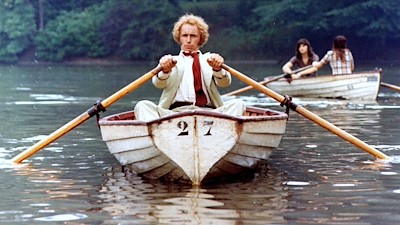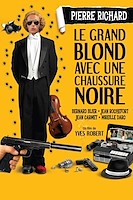Le grand blond avec une chaussure noire
Yves Robert, France, 1972o
A faction of the French secret service sells a harmless violinist to a rival faction as a cunning spy. This puts the musician in the crossfire of the two factions, both of which are watching him and want to protect or eliminate him in turn, while he himself has no idea what is being played. Add to this the fact that the musician cheats on his best friend with his wife, while the agents set a fatal blonde on him.
In cinephile circles, one occasionally comes across declared enemies of the "comédie française", whom they accuse of grimacing, all-round hysteria and wearing out tired gags. One nods in agreement and at the same time thinks: Is it different in Germany, Italy or Switzerland? (Let's not even talk about the hotbed of remakes and sequels.) Popular comedies live from the exaggeration of national idiosyncrasies and are therefore rarely export hits. But there are exceptions. The Tall Blond with the Black Shoe was a hit in half of Europe in 1973 and also did well in the USA despite Francophobic reviews. And: The film still works. Why is that? First of all, because of the simple but productive idea that a faction in the French secret service sells a harmless violinist to a rival faction as a cunning spy, whereupon both factions outdo each other with surveillance and over-interpretation of their victim - while the latter goes through the unleashed intrigue game completely unaware. Then, and this is the real sting, from the restraint that the director, Yves Robert, demands of his cast: the agents all play with poker faces, the comedy derives primarily from the spy movie clichés taken to the absurd, which are exploited visually with relish. Pierre Richard as the guileless Biedermann in the eye of the cyclone also sticks to this premise, except for a few burlesque pirouettes. He became a star with this film, the "comédie à la françise" his destiny. It was not always easy.
Andreas FurlerGalleryo







